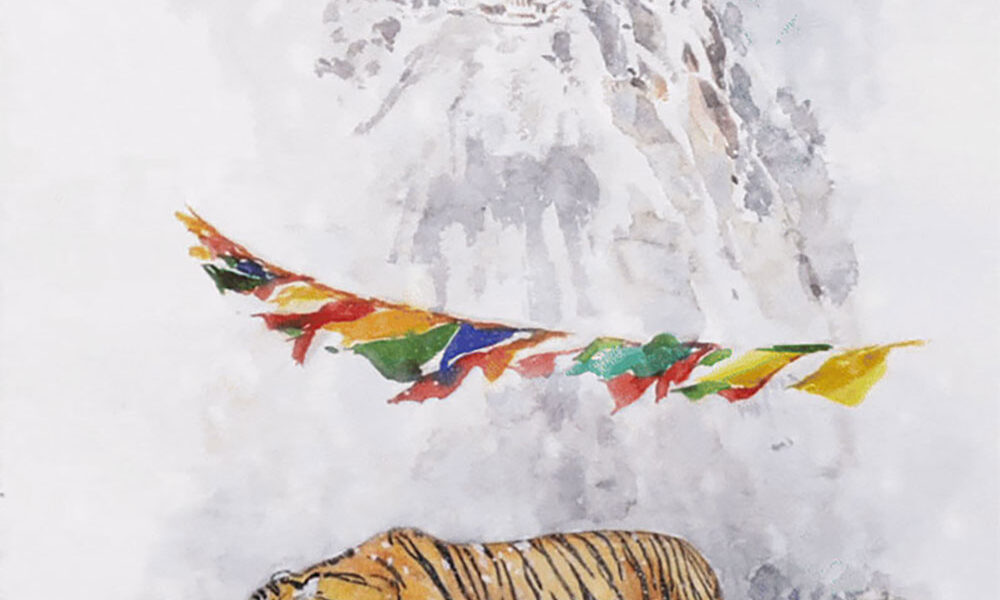NFTs
NFT auction raises $6,000 for tiger conservation

Can NFT trading be a sustainable source of funding for conservation?
Yangyel Lhaden
In a first for Bhutan, the digital artwork titled “The Tiger in the Snow” was auctioned on the blockchain for 1,889 Ether (ETH), which is equivalent to around $6,000.
ETH is the cryptocurrency of the Ethereum blockchain, used to pay for transactions, computational services, and smart contracts within the network.
The artwork ‘The Tiger in the Snow’, a watercolour painting created by a senior artist at VAST Bhutan, is inspired by a real tiger captured on camera during the second National Tiger Survey of 2022-23.
The painting depicts a tiger in the snow with the iconic Taktsang Monastery in the background. The artwork symbolizes the tiger’s habitat shifting to higher altitudes, possibly due to climate change and human activities.
The sale of the digital collectible took place at the tiger art auction and exhibition at the Sustainable Finance for the Tiger Landscape (SFTL) Conference held in Paro on April 22-23 this year to raise US$1 billion for tiger conservation.
A digital collectible is a unique and scarce digital asset traded on blockchain platforms as non-fungible tokens (NFTs), which are valued by collectors. An NFT is a unique digital asset that represents ownership or proof of authenticity of a specific item or piece of content.
The digital artwork was minted — the process of creating an NFT on the Ethereum blockchain — on OpenSea, a decentralized marketplace for buying, selling, and trading NFTs and digital assets. Druk Holding and Investments provided the technical support to convert the artwork into an NFT and register it on OpenSea.
The process of creating and listing the digital artwork on OpenSea for trading was done at a cost of around USD 400. Whenever the digital collectible is resold on OpenSea, the original creator also receives royalties ranging from five to ten percent. The royalties from the sale of the digital artwork ‘The Tiger in the Snow’ will be split between the Department of Forests and Park Services and the artist on a 60:40 basis.
The art auction, including the sale of NFTs, during SFTL raised Nu. 737,644 for tiger conservation. The auction was organized by conservation agencies such as Bhutan for Life, Bhutan Trust Fund for Environmental Conservation, Royal Society for Protection of Nature, Bhutan Foundation, and WWF Bhutan.
NFTs are gaining popularity globally for raising funds for conservation through digital art collectibles. For example, The Ocean Foundation launched ‘CryptoCorals’ to fund coral reef restoration, and the Rainforest Foundation US auctioned NFTs for rainforest conservation projects.
“Given the price of digital art sold during the recent Tiger Conference, NFTs show promise for raising funds for conservation,” said Kuenzang Tobgay of Bhutan For Life.
However, he highlighted the current sustainability risks in blockchain trading, pointing to the carbon footprint of high electricity consumption due to substantial computational needs. He said some studies suggest that the electricity consumed outweighs the benefits of NFT trading.
“As a global biodiversity hotspot, Bhutan could mint exotic species like tigers, snow leopards, golden langurs, black-necked cranes, white-bellied egrets, and more on NFT platforms to fund conservation initiatives. But an in-depth study needs to be conducted before we venture further into NFTs,” said Kuenzang Tobgay.
